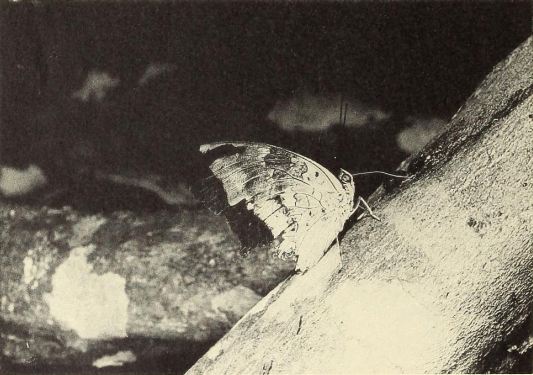IV. Summary
Two unrelated plants, under very different conditions, have been found to be characterized by their pronounced selective power of attraction for a few definite groups of Lepidoptera.
The first is fedegoso or wild heliotrope, Heliotropium indicum Linnaeus, which exercises a powerful attraction for two families of butterflies, Danaidae and Ithomiidae, and two families of moths, Euchromidae and Arctiidae. These four families happen to be the most specialized in their respective groups. The attraction or lure becomes effective only on the death of the plant and after the consequent shrivelling and desiccation of the foliage. It persists for ten days or two weeks.
The second plant is the tangerine orange tree. Citrus nobilis Andre, afflicted with what is probably a virus disease. The lure is the fermented matter exuded from small, bark lesions. In this case the attraction extends to three families of Lepidoptera, Nymphalidae, Morphidae and Brassolidae.
V. References
Beebe, W.
1952. Introduction to the ecology of the Arima Valley, Trinidad, B. W. I. Zoologica, 37:157-184.
Buxton, P. A.
1926. Euploea spp. frequenting dead twigs of Tournefortia argentea in Samoa and Tonga. Proc. Ent. Soc. London, 1: 35-37.
Dethier, V. G.
1947. Chemical insect attractants and repellents. The Blakiston Co., Phila., 289 pp.
Hagmann, G.
1938.
Hopkins, G. H. E.
Butterflies of Samoa and some neighboring island-groups. Insects of Samoa and other Samoan terrestrial Arthropoda. III. Lepidoptera. British Museum (Natural History), London. Ease. 1, p. 15.
Moss, A. M.
1947. Notes on the Syntomidae of Pard, with special reference to wasp mimicry and Fedegoso, Heliotropium indicum (Boraginaceae), as an attractant. Entomologist, London, 80: 30-35.
1954
Zoologica : scientific contributions of the New York Zoological Society. New York.
https://www.biodiversitylibrary.org/bibliography/42858

